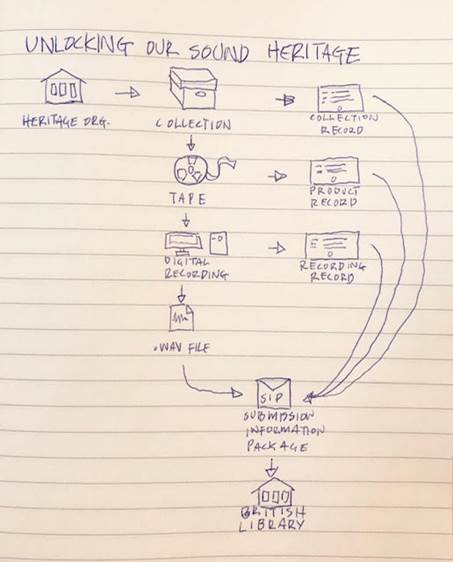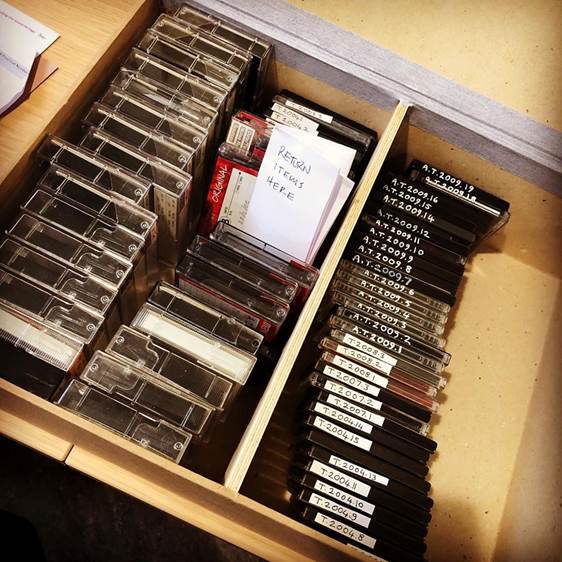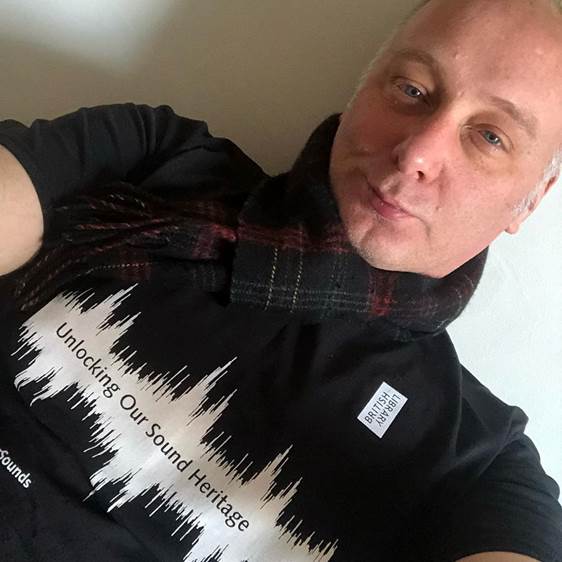By David Witteveen
Glasgow is a long way to come from Australia.
Yet when I had to choose a library for the industry placement part of my Masters of Information Management at RMIT University in Melbourne, my heart leapt at the possibility of doing it at the National Library of Scotland.
Blame Iain Banks, Trainspotting, and Chvrches. I have a massive soft spot for Scotland.
My background is in IT, and I’m interested in how technology can help libraries make their collections more discoverable. After a lot of emails, staff at the National Library of Scotland found the perfect placement for me: the Unlocking Our Sound Heritage project.

It’s a huge project, led by the British Library, to digitise, preserve, and put online half a million of the UK’s rare and unique sound recordings. The National Library is the project hub for Scotland, running out of their Kelvin Hall branch in Glasgow. The sheer amount of material that needs to be catalogued means that volunteers play an important part in the project, and my placement would be similar to the work the volunteers do.
I expected to learn about digitising audio tapes, cataloguing them, and clearing the copyright.
I didn’t expect to learn the difference between a Flying Scot (a type of bicycle made by David Rattray and Co.) and the Flying Scotsman (Graeme Obree, a record-setting cyclist famous for his homemade cycle Old Faithful).
I didn’t expect to learn about the hierarchy of roles a young glassmaker at Edinburgh Crystal worked through in their career, from taker-in to gatherer to ball-blower.
I didn’t expect to learn about the Craigo jute mill, or the inventor of the disposable nappy, or how to tell a Ross Records cassette from a Beechwoods Records one by their catalogue numbers.

But you can’t describe recordings without listening to them. Some of this knowledge I picked up from the interviews themselves. Some of it I learnt by frantically Googling to try and understand what the interviewers were talking about – there’s a lot of detective work in cataloguing.
And as I’ve worked my way through these collections, I’ve developed an odd, protective love for them. Scottish fiddle music may not be my favourite type of music, but I can see the similarities between a self-released cassette of Strathspeys and reels with a hand-drawn cover and the DIY punk music that’s more my tastes.
My placement has covered the technical aspects of digitising collections that I expected. I spent an afternoon with the audio engineer, learning how much manual work goes into handling open reel tapes. I learnt the workflow that will turn Excel spreadsheets into metadata accessible via the British Library website. And I’ve sat in on head-scratching discussions on how to convert files and metadata formatted for one computer database into files and metadata that can be used by a different computer database.

It’s been fascinating and educational. It’s knowledge that will help me in my career as a systems librarian. And I’ve met some wonderful and dedicated people.
The thing I come back to, though, is the realisation I had working my way through the boxes of oral histories and traditional music. These collections aren’t just tapes and boxes and Excel spreadsheets. These are people sharing the culture that they love.
It’s been a privilege to play a part in helping them.